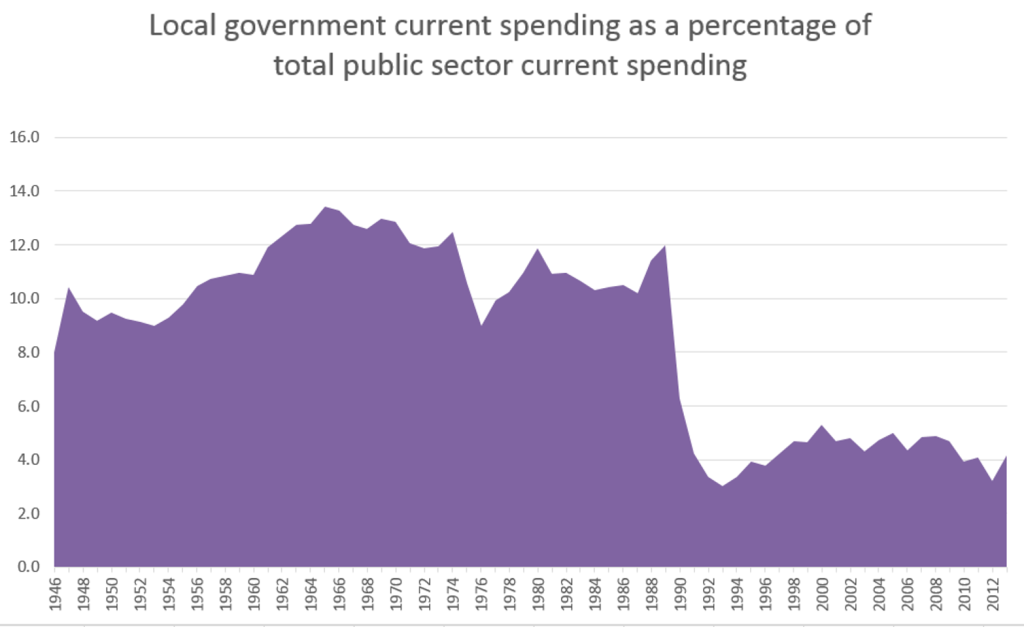We should double local government’s share of public spending
There have been some decent moves towards devolving more power from Whitehall to local councils since 2010. One thing, however, hasn’t happened – a significant shift in finances.
As the graph below shows, only a tiny proportion of total public sector current expenditure happens via local government, and it’s not even moving in the right direction.

That Labour’s record was pretty poor is not much consolation, as it means that whatever the result of the general election, the continuing financial enfeeblement of local government is likely to continue – unless the Liberal Democrats make it a priority to change this.
Yet so far the party’s policy development for the 2015 general election manifesto has been notable for financial commitments being made for everything but local government. That leaves less and less room for anything good to be done about local government.
It’s no coincidence that in the manifesto policy process, local government’s voice has been rather muted, so far. Kirsty Williams and the Welsh Liberal Democrats, by contrast, have worked the manifesto process skillfully and with great success to secure their policy priorities.
Being a member of the Federal Policy Committee, one notable difference I have seen between her approach and that of the local government lobby has been the nature of her demands – very specific, such as wanting tolls abolished on the Severn Bridge, rather than aspirational but vague, such as wanting a major rethinking of our approach to local government.
So here’s a thought for local government: we should set out to raise to 10% the proportion of current public sector expenditure that happens via local government.
That would be more than a doubling of current levels, so ambitious but also, given historic figures, clearly achievable. It would be a big enough leap to require significant change yet not one that would require so much re-engineering of the state that it would take years and years to work out how do.
It also is a target that can sensibly flex with economic growth, for no-one really has any idea what the size of the economy will be in 2020, making it unwise to fix too many financial figures regardless of wider economic context.
Doubling and more up to 10% provides a clear and simple aim, flexible enough to deal with the vagaries of the economy and of hung Parliament politics, but also substantive enough to make a real difference to how we are governed.
Thank you to the Office for National Statistics for providing the figures used in the graph. The percentage is worked out by comparing local government total current expenditure (ANLQ) with public sector total current expenditure (ANLT).
UPDATE
There has been a promising response from Party President Tim Farron:
@markpack I'd be keen to chat about this. On the local govt agenda we need to do more. V keen to discuss any idea you have.
— Tim Farron (@timfarron) September 3, 2014
Leave a Reply